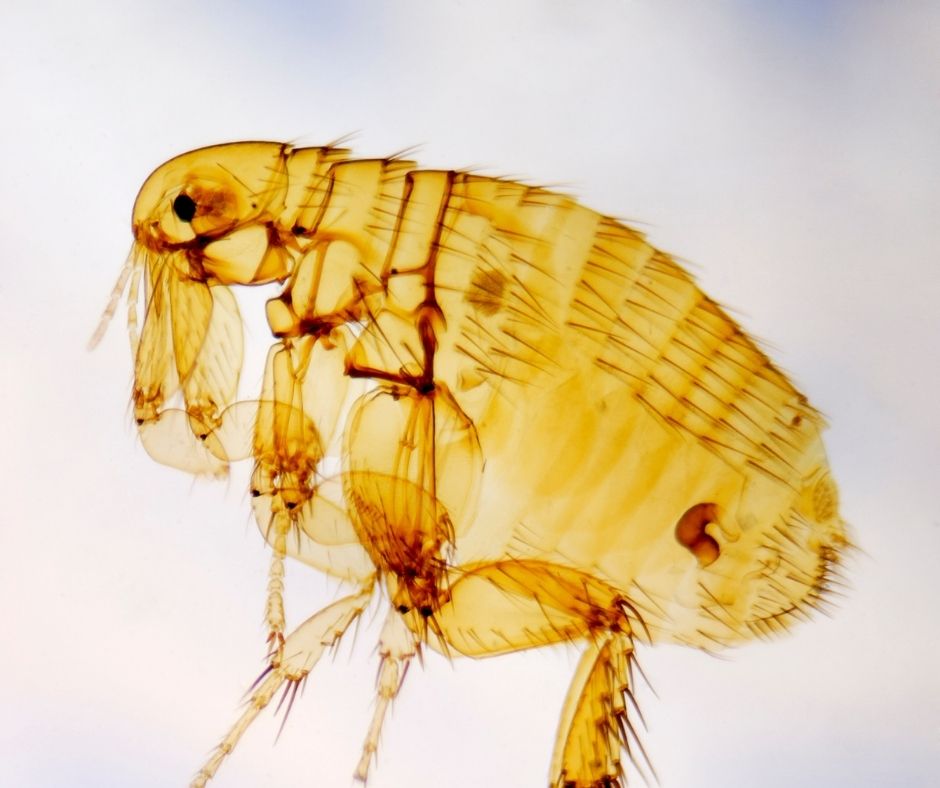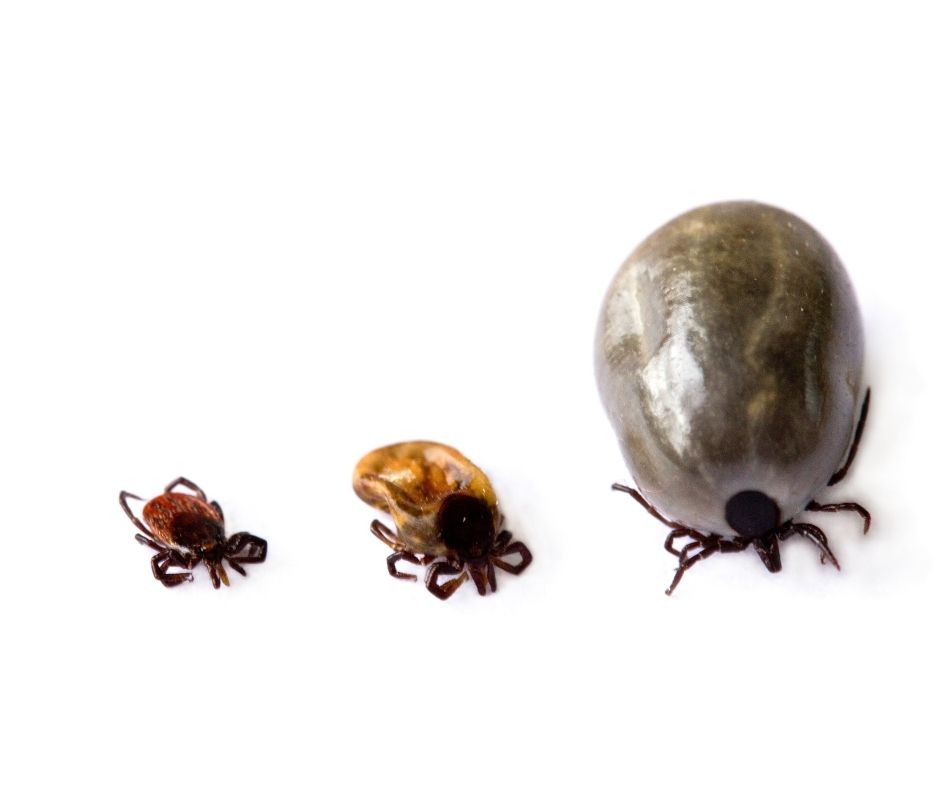
If you have experienced an infestation of fleas and ticks before, you know the chaos these tiny pests cause. The blood-consuming bugs will wreak havoc on your precious pets. But, perhaps to your surprise, they are just as likely to prey on you and your family.
And the horrors of fleas and ticks don’t stop here. Not only are they bothersome, but both pests are known for transmitting nasty diseases. If not for any other reason, because of this, they are certainly unwelcomed in your home.
James River Pest Solutions is quite familiar with these irritating critters. Continue reading to learn more about fleas and ticks indoors. We share our expert tips on correctly identifying and preventing fleas and ticks with you.
Identifying Fleas and Ticks
These pests are known for their irritating bites and the dangerous diseases they can spread to humans and pets. Both fleas and ticks consume blood for survival. And when they find their way into your home, you can expect you and your pet to be bothered by these pesky bugs, at the very least.
But this is where their similarities end. Though often grouped together, these two pests are entirely different animals.
To correctly identify one or the other, use the following as a guide:
Flea Identification
Appearance:
- Tiny, oval-shaped, red-brown bodies
- 6 legs
- Antennae
Behavior:
- Fleas are absent of wings and do not fly. However, they will jump several inches to get from place to place.
- They tend to stay away from humans and are more likely to bother your pets.
- An infestation of fleas can happen quickly because of their rapid reproduction.
- Fleas will bite without latching on, in contrast to ticks.

Tick Identification
Appearance:
- Small, round and flat bodies vary in color depending on the species
- 8 legs
- Body expands to become a round and almost spherical shape when engorged
Behavior:
- Ticks are also absent of wings and do not fly. And neither do they jump, as fleas do. But, they are expert hitch-hikers and will attach themselves to other animals to move large distances and perhaps make their way into your home.
- A single tick will bite and remain latched until it is removed or has become fully engorged.
- Ticks are just as likely to prey on humans as pets and other animals.

How Do You Know if You Have Fleas and Ticks in Your Home?
The first step to preventing fleas and ticks from entering your house is to know the signs of an infestation. There are three ways to know if you have these pests indoors- they’re bothering your pet, they’ve bitten you, or you see them throughout the house.
1 | They’re Bothering Your Pet
Most commonly, you’ll first realize you have a flea or tick infestation from seeing the bugs on your pet or noticing your pet’s symptoms. This is because your pet was likely the way the pest entered your home in the first place.
Suppose your pet shows restless behavior, like continuous scratching, shaking their head, or gnawing at their skin. In that case, it’s something you should certainly look into. These symptoms very well could be a sign of an infestation. However, they can also be symptoms of various other conditions, including seasonal allergies.
Keep an eye on your pet for the common symptoms of ticks and fleas below.
Fleas on Your Pet:
Check for fleas by inspecting their popular hiding spots, like the base of the tail, the neck, and the abdomen.
- “Flea dirt” or droppings in your pet’s fur that look like dark grains of sand
- Tiny, white flea eggs
- Inflamed skin
- Continuous scratching, biting, or licking of their skin and fur
- Hair loss
- Pale gums
- Scabs from excessive scratching
Ticks on Your Pet
Look for ticks by searching your pet’s neck, ears, head, and under their legs.
- Excessively licking, chewing, and biting their skin
- Inflamed and swollen area around tick bites or latched ticks
- Pale gums
- Lethargic behavior
- Scabs from continuous scratching and biting
2 | You’ve Been Bitten or Bothered by Ticks
The second most common way to find out you have fleas and ticks in your home is by noticing bites on yourself. Likewise, anyone living in your house may complain about itchy skin or tiny red spots on their body.
And although the symptoms are very similar, identifying bites on a human is slightly different. Use the following to correctly identify the bites from fleas and ticks on humans:
Human Symptoms of Flea Bites:
- Small red bumps in clusters, often on legs and ankles
- Itchy, irritated skin
- A red halo around the site of the bite
- Hives or rash developed near the bite
Human Symptoms of Tick Bites:
- Red, risen, and inflamed bite that may or may not still have a tick attached
- Itchiness and irritation that is often delayed a few days after the bite
- Symptoms of an allergic reaction such as fever, chills, fatigue, muscle pain, etc.
- The development of a large red halo around the bite indicates a transmitted disease

3 | There is Evidence in Your Home
If you are lucky enough not to see any clear evidence of these pests bothering you or your pet, you may first be introduced to the infestation by seeing them in your home. The evidence of fleas and ticks can be found in several areas of the house.
You’ll want to check for eggs, droppings, and the actual bug. To do this, you can thoroughly inspect the carpet, bedding, nooks, and crannies throughout the house.
The Dangers of Fleas and Ticks
Not only are they a nuisance, but fleas and ticks can cause severe health issues for people and pets alike.
Catching an illness from a flea bite is less common than contracting a disease from a tick. Nevertheless, fleas can spread bubonic plague, tularemia, and tapeworm. Fortunately, North America reports significantly fewer complications regarding flea bites than other parts of the world. Yet still, it is possible.
Ticks will latch onto a human or animal and remain there for as long as possible. When the pest is attached, it can transmit a number of diseases. Ticks may spread serious illnesses, like Lyme disease, Rocky Mountain spotted fever, etc.
Preventing Fleas and Ticks
The simple solution to preventing fleas and ticks from invading your home is to limit the time you and your pet spend outdoors. However, if you’re like most pet owners, you want them to get plenty of playtime outside, especially if you have a dog.
Luckily, there are other ways to keep fleas and ticks out of the house. Use the following tips to work towards a flea-free and tick-free space:
- After spending time outside, check you and your pet for any unwanted hitch-hiking fleas or ticks. Inspect your clothes and body, including ankles, legs, under your arms, and around your private areas. For your pet, you can check for bugs by looking through their fur or using a flea comb to catch them.
- Be sure to bathe your pets regularly. And if fleas and ticks have been an issue in the past, you can use specialized shampoos to keep them away from your animals.
- Vacuum each day to remove any eggs, larvae, or adults. Ensure you do so thoroughly by vacuuming the carpets, rugs, furniture fabric, and baseboards.
- Wash carpets, rugs, and pet beds as often as possible.
- Talk with your local vet about flea and tick prevention methods and specific medications that help to keep these pests off your dog or cat.
Getting Rid of Fleas and Ticks with James River Pest Solutions
When it comes to an infestation of fleas or ticks, entirely eliminating the pests can be tricky. Though, more often than not, a trusted pest removal company is necessary.
But, if the infestation is mild, there are a few things you can do to attempt to get rid of these stubborn pests:
- Immediately vacuum any evidence of the pest, like eggs, droppings, and larvae, as well as the tick or flea itself. And don’t forget to dump the contents out of the vacuum and dispose of it in a place where the fleas or ticks cannot return to your home.
- Keep the areas where you’ve found these pests clean and tidy to discourage reproduction.
- Wash your pets with specialized shampoos and use a flea comb to remove the pests.
- Safely remove ticks and flush them or dispose of them in a similar fashion.
If taking matters into your own hands doesn’t work out as planned, know that the experts at James River are ready for action and happy to help. We have the tools, knowledge, and experience to eliminate fleas and ticks in the most efficient and effective ways.
So, if ticks or fleas infest your home, don’t waste a moment. These pests reproduce rapidly, and before you know it, you could have a major problem on your hands.
Reach out to James River Pest Solutions for all your pest removal and prevention needs.